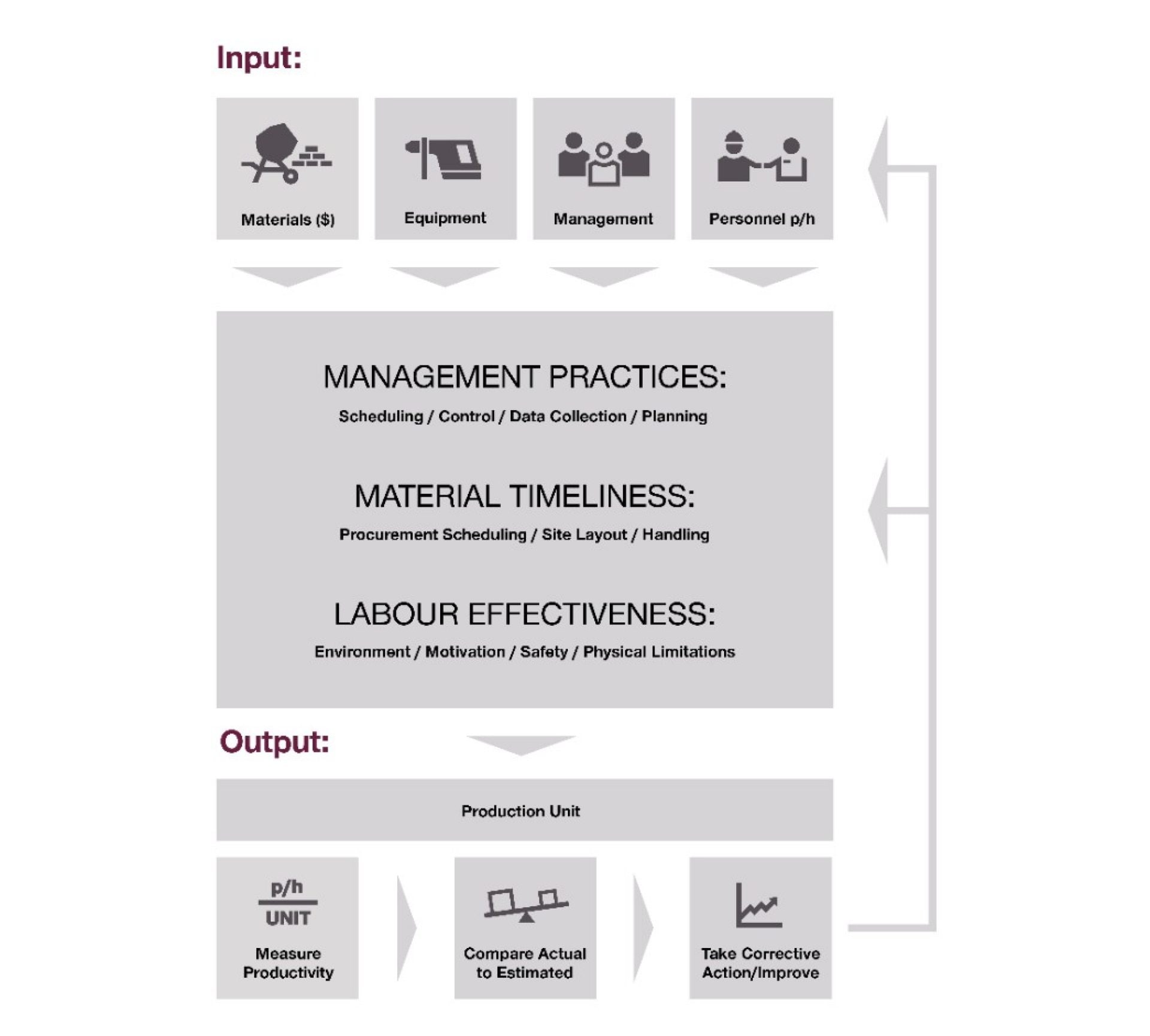- Home
- Business Optimization
- Solutions
- Manage Equipment
- Construction Productivity Analysis
- What does productivity actually mean
What is productivity in the construction industry?

The so-called ‘productivity problem’ is a regular topic of debate in the construction industry.
There are many challenges construction companies face in relation to productivity that we’ve addressed in a previous blog, such as controlling costs, meeting compliance and managing your workforce.
However, to be able to effectively fight these construction productivity challenges we need to be able to understand what productivity actually means for the construction sector and how businesses can measure it.
What is productivity?
Simply defined, productivity is the rate of output per unit of input.
In construction, the output is usually expressed in weight, length, or volume, and the input resource is usually in cost of labour or man-hours.
The physical progress achieved per person each hour, better known as labour productivity, weighs heavily on the overall calculation of construction productivity.
The two most important measures of labour productivity are the effectiveness with which labour is used in the construction process and the relative efficiency of labour doing what it is required to do at a given time and place.
To calculate labour productivity in your construction business, you could ask yourself the following questions:
- How much work can a group of 20 workers get done in a day?
- If the number of workers is fixed, how many days do you need to complete the job?
- If the days you have to complete the job are fixed, how many workers will you need to finish in time?
- How much time can you save on finishing one part of the job if you invest in equipment that works faster?
Why is productivity important?
Labour efficiency is the basis of most tender estimates, as well as the yardstick by which performance is measured and monitored. However, labour efficiency is very closely related to physical resources and ability in terms of knowledge and skills.
It is safe to say that a workforce that has limited access to badly managed tools would not produce that high rate of output attached to productive companies.
PRODUCTIVITY IMPROVEMENT FRAMEWORK

Being able to effectively manage labour and physical assets would help to solve some of the biggest construction challenges, such as:
- Going over budget and over time on projects
- Taking the risk of reputational damage and failing to complete projects
- Breaching your regulator obligations to health and safety
How to improve productivity
Advances in technology are making management of labour productivity more predictable. The use of technology can expose inefficiencies in your business, improve construction planning and help manage physical assets, which frees up employee time and improve overall profitability.
